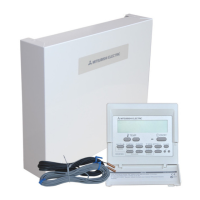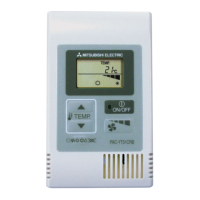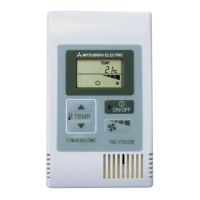9
en
3.7 Energy monitor
*3
End user can monitor accumulated*1 consumption and production energy in each operation mode*2 on the main remote controller.
*1 Monthly and Year to date
*2 - DHW operation
- Space heating
- Space cooling
*3 Not available during multiple outdoor unit control.
Refer to “7. Remote controller” for how to check the energy, and “5.1 DIP switch functions” for the details on DIP-SW setting.
Either one of the following two methods is used for monitoring.
Note: The method 1 should be used as a guide. If a certain accuracy is required, the method 2 should be used.
Booster heater1 Booster heater2
Immersion
heater
Pump1 Pump2 Pump3
2kW*1 4kW*1 0kW*1
***
*1 0W*1 0W*1
<Table 3.7>
Method 1. Calculation internally
Electricity consumption is calculated internally based on the energy consumption of outdoor unit, electric heater, water pump(s) and other auxiliaries.
Delivered heat is calculated internally by multiplying delta T (Flow and Return temp.) and flow rate measured by the locally supplied sensors.
Set the electric heater capacity and water pump(s) input according to indoor unit model and specs of additional pump(s) supplied locally. (Refer to the menu tree in “7.
Remote controller”.)
*1 Be sure to change the setting corresponding to the specication of locally supplied auxiliaries such as electric heater and pump.
When anti-freeze solution (propylene glycol) is used for primary water circuit, set the delivered energy adjustment if necessary.
Should you need more details, refer to “7. Remote controller”.
Method 2. Actual measurement by external meter (locally supplied)
FTC has external input terminals for 2 ‘Electric energy meters’ and a ‘Heat meter’.
If two ‘Electric energy meters’ are connected, the 2 recorded values will be combined at the FTC and shown on the main remote controller.
(e.g. Meter 1 for H/P power line, Meter 2 for heater power line)
Refer to the “Signal inputs” section in “4.5 Connecting inputs/outputs” for more information on connectable electric energy meter and heat meter.
3. System
3.6 Minimum amount of water required in the space heating/cooling circuit
Outdoor heat pump unit
Indoor unit
containing water
amount [L]
Additional required water amount [L]
*1
Average /
Warmer climate
*2
Colder climate
*2
PUZ-(H)WM model and PUHZ-S(H)W model:
Refer to the latest manual on the website.
<Table 3.6.1>
*1 Water amount: If there is a bypass circuit, above table means minimum
water amount in case of bypass.
*2 Climate: Please refer to 2009/125/EC: Energy-related Products Directive
and Regulation (EU) No 813/2013 to conrm your climate zone.
*3 SUZ series: Flow temperature should never drop below 32 °C when
outdoor temperature drops below -15 °C.
There are potential risks of plate heat exchanger getting frozen and
damaged, and also outdoor heat exchanger would frequently frost
because of insucient defrosting.
Case 1. No division between primary and secondary circuit
• Please ensure the required water amount according to the table 3.6.1 by
water pipe and radiator or underoor heating.
Case 2. Separate primary and secondary circuit
• If the interlock operation of primary and secondary pump is not available,
please ensure required additional water in only primary circuit according to
the table 3.6.1.
• If the interlock operation of primary and secondary pump is not available,
please ensure required additional water in only primary circuit according to
Table 3.6.1.
In case of the shortage of required water amount, please install buer tank.

